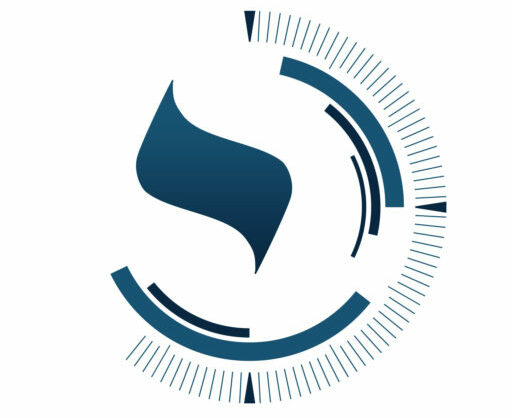The Power of the Daily Scrum
One of the biggest threats to your company’s productivity is poor communication within teams. Silence among team members is a clear problem. But just as damaging—though less obvious—is the flood of emails and endless meetings that masquerade as communication while actually diminishing a team’s ability to collaborate.
Fortunately, there’s a simple yet powerful tool that can dramatically boost your team’s performance every morning. And, as always, I’ll introduce it through a story—one drawn from my military experience.
The SCRUM in Action
December 2006. Our team of commandos was stationed in the gymnasium of a small village, near a terrorist stronghold we were targeting. A few hours before heading out on another high-risk mission, we prepared our supplies, adjusted our equipment, checked communication systems, loaded the undercover car, and put on our gear. Then, we waited.
Some team members ran through worst-case scenarios, rehearsing potential responses. Others read, meditated, or relieved tension by chatting about anything and everything. No matter how many times we had done this, the moment before an operation always felt surreal. The quiet before the storm.
Then, a phone rang.
Kibalti.
The call ended.
Yesh ishour!
In less than 30 seconds, we had formed a semi-circle around our operations manager.
“Guys, you know how critical this mission is. If we do this right, we’ll save lives. I’ll repeat the location of each team. Lavi, you’re at six o’clock to conduct the extraction. Nathan’s at nine o’clock to prevent an escape from the east side of the building. Daniel’s team is at twelve o’clock by the back windows. Finally, Sasson is at three o’clock to neutralize any external threat.”
Without missing a beat, the chief turned to me: “Lio, ma hamessima shelkha?” (Lio, what’s your mission?)
Each of us, in turn, confirmed our roles. The entire briefing lasted mere seconds.
“Very good. Any questions?”
Silence.
“Beatslakha!” (Good luck!)
One minute. That was all it took to align the entire team. One minute to reinforce:
- The common objective
- The mission of each team
- The individual tasks
- The removal of obstacles
- A word of encouragement
Since then, I’ve replicated this same kind of daily meeting in business to align my teams and you should too. Here’s how.
The Five Key Components of a Great Daily Scrum
1. A Common Goal
Nothing unites a team more effectively than a shared objective. In business, we’re not dealing with life-and-death missions, but the principle remains the same—everyone must rally behind a clear goal.
Example:
“For this quarter, our goal is to hit the $6 million mark for ARR. From signing new contracts to customer delivery, through marketing and quality control—each of your actions will bring us closer to this objective.”
2. Appreciation of Other Teams’ Work
Daily meetings help prevent silos and build appreciation for each team’s contributions. I once had a sales manager and a production manager constantly at odds—one pushing for immediate client requests, the other struggling to manage priorities. Every time I stepped away, tensions flared.
Daily Scrums helped bridge this divide by making everyone’s challenges visible and fostering mutual respect.
Example: Each Monday, team members share their key goal for the week:
- Project Manager: Deliver X products on time
- Sales Team: Sign contracts worth X amount
- Marketing: Generate X qualified leads
- Account Manager: Process X customer requests for smoother renewals
- Finance: Collect X payments from clients
- Innovation: Onboard X new users to test a prototype
Everyone sees their role in the bigger picture.
3. The Individual Task
Scrum, an agile management method inspired by rugby, keeps teams on track. Just as in the game, where players reset and drive forward, business teams use Scrum to ensure alignment.
The daily Scrum replaces hours of email back-and-forth with a 10-minute meeting. Each person shares:
- What they accomplished yesterday
- Their measurable goal for today
- Any blockers in their way
As a leader, you also participate. Your job isn’t to develop strategies in isolation—it’s to ensure execution alongside your team.
4. Removing Obstacles
Before ending the Scrum, always ask:
“Has anyone encountered any blockers?”
Jack Welch, the legendary CEO of General Electric, described a key role of leadership as being the Chief Curling Officer—clearing obstacles so your team can move forward
Example: If someone is stuck on a problem, solve it together immediately after the Scrum instead of pulling the entire team into an unnecessary discussion.
5. A Word of Encouragement
End the meeting on a positive note. Encourage. Inspire. Keep morale high.
A Typical Example
Here’s a concrete example of a daily Scrum I conducted just before writing these lines! One of thousands.
Celine (Marketing): Hello, yesterday I transformed five new leads. Today, my goal is to reach 150 leads through a campaign. No obstacles.
Samantha (Delivery): Hello, yesterday I delivered two customer projects. Today, my goal is to complete the Doordash product. No obstacles.
Aswin (Production): Hello, yesterday I handled five customer requests. Today, I have four tasks: creating new reference tables, developing a module for Doordash, updating the Australian database, and completing cloud migration.
Lionel: If you could accomplish only one, which would it be?
Aswin: Since my weekly goal is improving customer data quality, I’d prioritize the Doordash module.
Lionel: Perfect. Good luck, Aswin.
Lesson #1: Avoid overloading team members. Prioritize the task that aligns with the larger weekly goal.
Bill (Sales): Hello, yesterday I reached my goal with two product demonstrations. Today my goal is to prepare a sales proposal for Chef Works. No obstacles.
Roberto (R&D): Hello, yesterday my goal was to scrape x sources. I didn’t achieve it because of a blocker introduced by Google. Today, my goal is to create a module to get around the blocker and achieve yesterday’s goal.
Mike (Sales): Hello, yesterday I followed up with five customers. Today, I’m prospecting ten new companies. One obstacle: a sales cycle blocked by last-minute client requests.
Lionel: Stay after the Scrum, we’ll solve this together.
Lesson #2: Complex issues should be tackled after the Scrum to avoid wasting the team’s time.
Raquel (Finance): Hello everyone, I was interrupted several times yesterday, and I was only able to review 50% of the budget I’m working on. Today, I’ll finalize this actualized budget first before closing our books for Q2.
Nick (Production): Hello, yesterday my mission was to update three customer databases. It’s done. Today my goal is the quality control of the OpenTable file.
Erin (Customer Success): Hello, I have three client calls today.
Lionel: Calls aren’t goals. What’s your expected outcome?
Erin: Finalizing their client instances.
Lionel: Perfect. Prepare a short summary of project progress to ensure we obtain final validation.
Lesson #3: Always define the desired outcome before any interaction.
Jordi (Sales): Hello, yesterday I achieved my goal by obtaining a verbal agreement for a paid POC34 in the U.S., with Bimbo. Today, I have to send them an onboarding document summarizing all the elements discussed for invoicing.
Pooja (Production): Hello, yesterday I achieved my goal with the update of the Canadian database. Today, my goal is to measure the quality of our U.S. database according to our internal criteria.
Wes (Delivery): Hello, yesterday I achieved my goal of building a common format to facilitate PFG’s delivery. Today my primary focus is the delivery of the Australian database to Doordash.
Lionel: Opa! If I remember correctly, Doordash renewed its contract for the United States but not Australia. Can you hold the delivery of the final product? I’ll use it to bill them.
Lesson #4: A ten-minute Scrum keeps everyone aligned, helping spot and prevent costly mistakes—like catching a $30,000 billing error just in time.
Kevin (R&D): Hello, I finished customizing a module on the BlueBunny platform yesterday. Today, I’ll modify the hierarchy of fields on their customized instance.
Julien (SDR): Hello, yesterday I didn’t manage to get a client appointment. Today, I’ll dowhat’s needed to obtain two.
Pauline (Performance): Hello, yesterday I completed my objective, namely producing the market penetration analysis of the RedBull project. My goal for today is to create pilot samples for five European countries with the same template as the U.S. one.
Lionel: That’s an excellent initiative to replicate this success in Europe. It’s true that the data sample delivered in the U.S. was very well received.
Lesson #5: Instead of burying best practices in forgotten files, the daily Scrum ensures they’re shared and applied in real time, driving success across teams and locations.
Lionel (GM): Did I forget anyone? No? In that case, it’s my turn! Hello everyone, yesterday I achieved my goal of negotiating the renewal of the Royal Cup contract up to $240K. Today, I’ll establish a postCovid19 plan including everyone’s new responsibilities for the next quarter. Stay focused, don’t let yourself be disturbed! Good luck and see you tomorrow!

Another Real Founder Example: Octopush
Octopush, a startup in the Yood Portfolio, implemented this exact approach and saw drastic improvements in performance. By integrating the daily Scrum, they:
- Increased Annual Contract Value (ACV) by 35%
- Boosted Retention Rate by 40%
- Improved Lead Generation by 50%
- Maximized Revenue per Person, making their team significantly more efficient
This wasn’t due to hiring more people or increasing their marketing spend. The shift happened because they streamlined internal communication, reduced inefficiencies, and focused everyone on the right priorities.
If a bootstrapped startup can achieve these results, so can you.
Seven Minutes to Triple Productivity
Why wouldn’t you implement this? Start your daily Scrum tomorrow, and watch your team transform.





